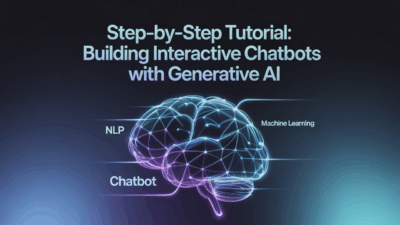In the rapidly evolving world of e-commerce, staying competitive means leveraging cutting-edge technologies to make smarter business decisions. One such innovation is the integration of generative AI into dynamic pricing strategies. By harnessing the power of artificial intelligence, online retailers can adjust prices in real-time based on market conditions, consumer behavior, and competitor activity . This blog post explores how generative AI transforms dynamic pricing in e-commerce platforms and why it’s becoming a game-changer for digital businesses.
What Is Dynamic Pricing?
Dynamic pricing is a pricing strategy where businesses automatically adjust product or service prices based on supply and demand, time-based factors, and competitor pricing. In traditional settings, this process often relies on manual analysis or rule-based systems. However, with the introduction of AI-driven solutions, the accuracy and responsiveness of these adjustments have significantly improved .
How Generative AI Enhances Dynamic Pricing
Generative AI goes beyond basic automation by analyzing vast datasets to identify patterns and generate insights that inform pricing decisions. Unlike conventional methods, which may only react to known variables, generative AI can predict trends, simulate outcomes, and recommend optimal pricing strategies tailored to specific customer segments .
For example, AI can analyze historical sales data, current inventory levels, seasonal trends, and even social media sentiment to determine the most profitable price point at any given moment . This level of precision enables retailers to maximize revenue while maintaining competitiveness.
Key Benefits of Using Generative AI for Dynamic Pricing
1. Real-Time Adjustments
With generative AI, e-commerce platforms can update prices in real-time based on live market data. This ensures that businesses remain agile and responsive to fluctuating demand and supply chain disruptions .
2. Personalized Pricing Strategies
AI can segment customers based on purchasing behavior and preferences, allowing businesses to offer personalized pricing or promotions. This not only enhances customer satisfaction but also increases conversion rates .
3. Competitive Advantage
By continuously monitoring competitor pricing and market trends, generative AI helps businesses stay ahead of the curve. Retailers can automatically adjust their prices to undercut competitors without sacrificing profit margins .
4. Improved Inventory Management
AI-powered dynamic pricing also contributes to better inventory control by aligning pricing with stock levels. For instance, when inventory is high, prices can be reduced to stimulate sales, whereas scarce items can be priced higher to capitalize on demand .
Challenges and Ethical Considerations
Despite its many advantages, implementing generative AI in dynamic pricing comes with challenges. Ensuring transparency and fairness in automated pricing decisions is crucial, as overly aggressive algorithms could lead to customer dissatisfaction or regulatory concerns . Additionally, integrating AI into existing systems requires significant investment in technology and expertise.
Real-World Applications
Several forward-thinking e-commerce companies are already reaping the benefits of AI-driven pricing. From fashion retailers adjusting clothing prices based on weather forecasts to electronics sellers optimizing prices during holiday seasons, the applications are diverse and impactful . As AI continues to evolve, we can expect even more sophisticated use cases, including hyper-personalized pricing and predictive pricing models that anticipate market shifts before they occur .
Conclusion
Generative AI is revolutionizing the way e-commerce platforms approach dynamic pricing. By enabling real-time, data-driven decisions, AI not only boosts profitability but also enhances customer engagement and operational efficiency. While there are challenges to navigate, the potential rewards make it clear that AI-powered pricing strategies will play a central role in the future of digital commerce. As the technology matures, businesses that adopt generative AI early will likely find themselves at a significant advantage in an increasingly competitive marketplace .


